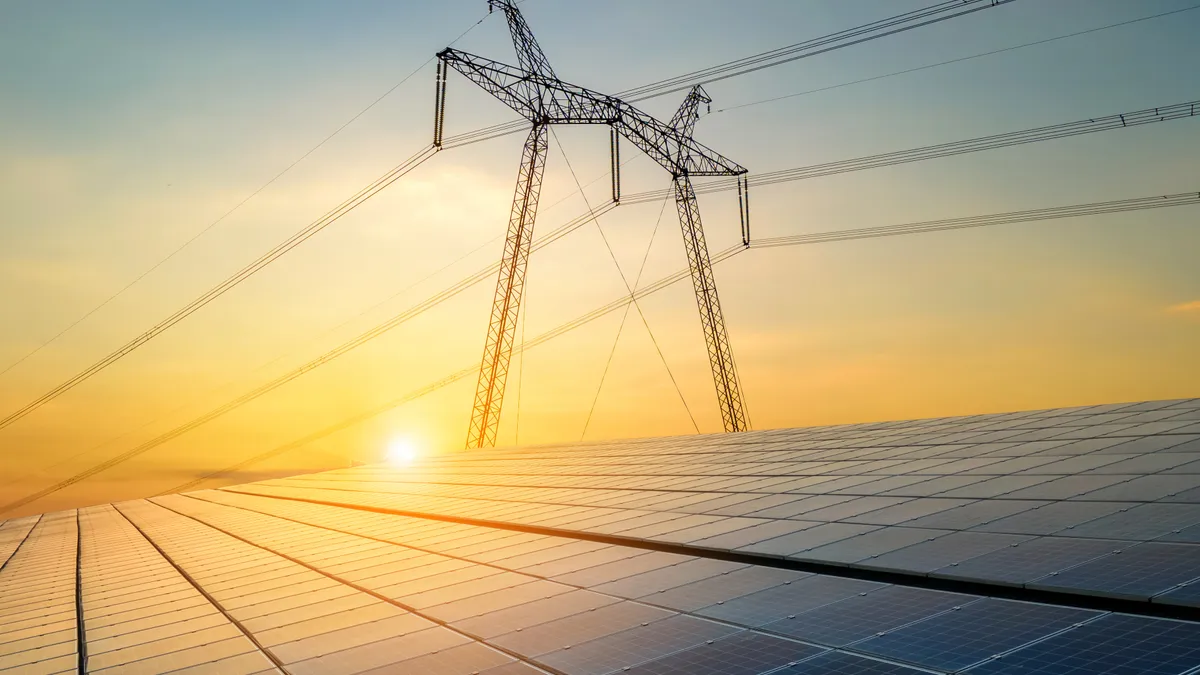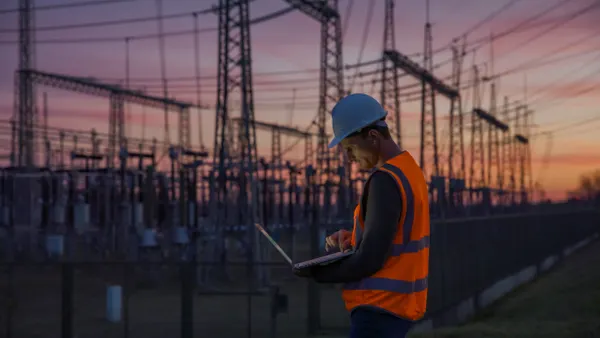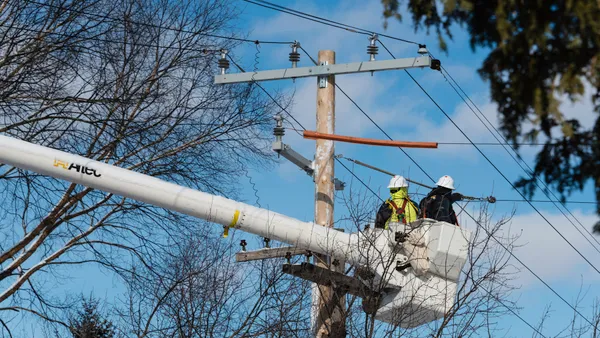Dive Brief:
- The U.S. high-voltage transmission system needs to grow 2.3% a year, up from its 1% annual growth rate over the last decade, to meet the Inflation Reduction Act’s greenhouse gas emissions reduction potential, according to a report released Friday by the Princeton University-led REPEAT Project.
- The law’s carbon dioxide emissions reduction potential falls by 80% if the pace of transmission additions remains unchanged and falls by 25% if transmission growth increases to only 1.5% a year, the REPEAT Project analysis found.
- “If electricity transmission cannot be expanded fast enough, power sector emissions and associated pollution and public health impacts could increase significantly as gas and coal-fired power plants produce more to meet growing demand from electric vehicles and other electrification” spurred by the Inflation Reduction Act, REPEAT Project analysts said in the report.
Dive Insight:
The report shows how reaching the emissions reduction potential of the Inflation Reduction Act, signed into law in August, depends on increasing the pace of transmission development.
The law could cut annual U.S. greenhouse gas emissions by about 1 billion metric tons a year by 2030, helping drive down carbon emissions by about 42% from 2005 levels, according to preliminary analysis released last month by the REPEAT Project. REPEAT stands for Rapid Energy Policy Evaluation and Analysis Toolkit.
“That outcome depends on more than doubling the historical pace of electricity transmission expansion over the last decade in order to interconnect new renewable resources at sufficient pace and meet growing demand from electric vehicles, heat pumps, and other electrification,” the REPEAT Project analysts said in the latest report.
“While our modeling finds this outcome makes economic sense, current transmission planning, siting, permitting and cost allocation practices can all potentially impede the real-world pace of transmission expansion,” the analysts said.
Developing and building high-voltage transmission lines can take years. Last year, 193 miles of 230-kV and larger transmission lines started operating, down from 1,133 miles in 2020, according to an infrastructure report the Federal Energy Regulatory Commission issued in March. The agency estimated that transmission projects totaling 2,144 miles had a high probability of coming online between January 2022 and June 2024.
While the U.S. transmission system grew about 1% a year over the last 10 years, it grew at a 2.3% average annual pace from 1978 through 2020, according to the REPEAT Project report.
Constraining transmission growth severely limits the expansion of wind and solar power, the REPEAT Project analysis found. For example, 105 GW of solar and 20 GW of wind could be added in the 2029-2030 period if transmission grows 2.3% a year compared with 44 GW of solar and about 10 GW of wind if transmission grows at the current pace, according to the analysts’ modeling.
If transmission expansion keeps its current pace, natural gas use will increase to 4% above 2021 levels in 2030 and remain elevated through 2035, the REPEAT project analysts said. At the 2.3% annual growth rate, gas use would fall by 17% by 2030 in comparison, according to the report.
Partly in response to the slow pace of regional transmission development, the Federal Energy Regulatory Commission earlier this year proposed reforming its rules governing transmission planning and cost allocation as well as rules over interconnecting generators to the grid. It may take several years before any new rules are put into effect, however.
Sen. Joe Manchin, D-W.Va., last week introduced a bill aimed at speeding the permitting process for energy infrastructure, including transmission lines.













